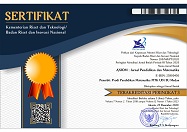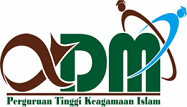Analysis of numeracy literacy skills in elementary school students
Abstract
This study analyzes students' numeracy literacy skills at the middle level (levels 3 and 4). The research subjects comprised three students from SDN (elementary school) 106831 Bakaran Batu, Deli Serdang Regency, representing varying initial math abilities (high, medium, and low). Student groupings were based on data from mathematics test scores. The research follows a descriptive qualitative approach using Sugiyono’s methodology. The research instrument employed was a mid-level numeracy literacy ability test (level 3 and level 4), which included questions assessing cognitive processes related to application and reasoning, as well as interview guidelines. Data analysis techniques involved data reduction, presentation, and conclusion. The study revealed that highly skilled students demonstrated proficiency in level 3 (application) and level 4 (reasoning) numeracy literacy. However, students with moderate and low abilities struggled to understand questions at these levels. Common student errors included failing to record relevant information from the questions, making mistakes in problem-solving processes, and neglecting to document their answer conclusions. The main factor hindering students' ability to answer moderate-level numeracy literacy questions appears to be their lack of familiarity with word problems related to everyday life. Additionally, students have difficulty grasping the relationship between concepts presented in contextual problems.
Keywords
Full Text:
PDFReferences
Aryani, I., Nadia, R., Susanti, M., Musriandi, R., Irfan, A., Anzora, Suryani, Hasanah, Hamama, S. F., & Maulida. (2022). Peningkatan literasi numerasi siswa sekolah dasar. Jurnal Abdimas UNAYA (Jurnal Pengabdian Kepada Masyarakat), 3(2), 37–41.
Ekowati, D.W., Astuti, Y.P., Utami, I.W.P., Mukhlishina, I., & Suwandayani, B. I. (2019). Literasi numerasi di sd muhamadiyah. ELSE (Elementary School Educatio Journal), 3(4), 93–103. https://doi.org/10.30651/else.v3i1.2541
Kemendikbud. (2017). Gerakan Literasi Nasional.
Lange, J.De. (2006). Mathematical Literacy for Living From Oecd-Pisa Perspective. Tsukuba Journal of Educational Study in Mathematics, 25, 13–35.
Lestari, E.D. (2019). Penerapan budaya literasi numerasi pada pembelajaran tematik kelas 3 di sd muhammadiyah 1 malang. Universitas Muhammadiyah Malang.[Skripsi]
Maysarah, S., & Andhany, E. (2022). Pengembangan modul pembelajaran digital interaktif berbasis literasi matematika. Universitas Islam Negeri Sumatera Utara
OECD. (2014). PISA 2012 Results: what students know and can do. In PISA for Development Brief-OECD, 1(1).
OECD. (2019). PISA 2018 result: what students know and can do, 1(1). https://doi.org/10.1787/5f07c754-en
Perdana, R., & Suswandari, M. (2021). Numerical literacy in thematic learning for upper grade elementary school students. Absis: Mathematics Education Journal, 3(1), 9–15. https://doi.org/10.32585/absis.v3i1.1385
Pratiwi, A.D., Nugroho, A.A., Setyawati, R.D., Raharjo, S. (2023). Analisis kemampuan literasi numerasi pada siswa kelas iv di sd negeri tlogosari 01 semarang. Janacitta, 6(1), 38–47. https://doi.org/10.35473/jnctt.v6i1.2263
Putri, B.A., Utomo, D.P., & Zukhrufurrohmah. (2021). Analisis kemampuan literasi numerasi peserta didik smp dalam menyelesaikan soal cerita aljabar. JRPM (Jurnal Review Pembelajaran Matematika), 6(2), 141–153. https://doi.org/10.15642/jrpm.2021.6.2.141-153
Rezky, M., Hidayanto, E., & Parta, I.N. (2022). Kemampuan literasi numerasi siswa dalam menyelesaikan soal konteks sosial budaya pada topik geometri jenjang smp. AKSIOMA: Jurnal Program Studi Pendidikan Matematika, 11(2), 1548. https://doi.org/10.24127/ajpm.v11i2.4879
Rosidi, A.A., Nimah, M., & Rahayu, E. (2022). Analisis kemampuan literasi matematis siswa ditinjau dari gaya belajar. Jurnal Kewarganegaraan, 6(2), 3303–3315. https://doi.org/10.37850/cendekia.v10i02.70
Setya, D., & Purnomo, H. (2023). Analisis kemampuan literasi numerasi siswa kelas 5 sd negeri tamansari 1. MIDA: Jurnal Pendidikan Dasar Islam, 6(2), 216–227. https://doi.org/10.52166/mida.v6i2.4621
Sugiyono. (2016). Metode Penelitian Kuantitatif, Kualitatif dan Kombinasi (Mixed Methods) (2nd ed.). Bandung: Alfabeta.
Unesco. (2006). Literacy for life. Inggris: EFA global monitoring report. https://doi.org/10.54676/HFRH4626
Widiantari, N.K.K., Suparta, I.N., & Sariyasa, S. (2022). Meningkatkan literasi numerasi dan pendidikan karakter dengan e-modul bermuatan etnomatematika di era pandemi covid-19. JIPM (Jurnal Ilmiah Pendidikan Matematika), 10(2), 331. https://doi.org/10.25273/jipm.v10i2.10218
DOI: http://dx.doi.org/10.30821/axiom.v13i1.16006
Refbacks
- There are currently no refbacks.
Copyright (c) 2024 Siti Maysarah, Dian Armanto, Izwita Dewi, Sahat Saragih

This work is licensed under a Creative Commons Attribution-ShareAlike 4.0 International License.
p-ISSN: 2087-8249 | e-ISSN: 2580-0450
Indexed by:
AXIOM : Jurnal Pendidikan dan Matematika is licensed under a Creative Commons Attribution-ShareAlike 4.0 International License.











